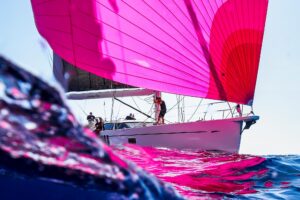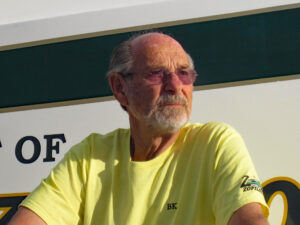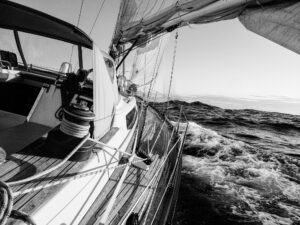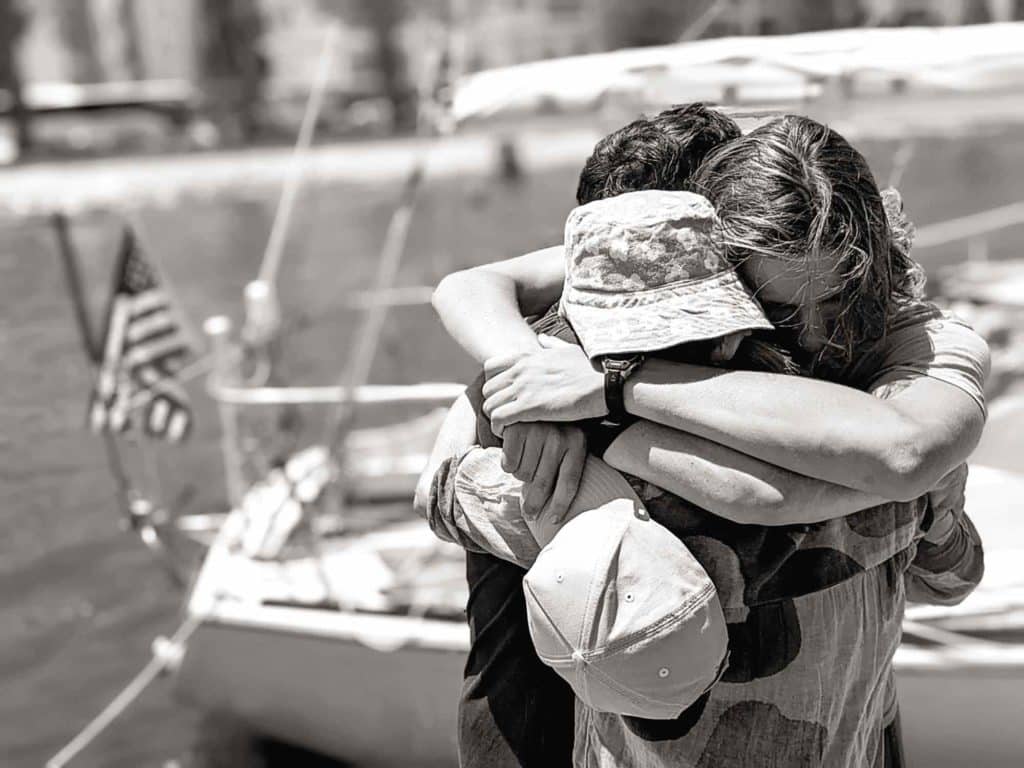
This past summer, at age 16 and with his sophomore year of high school just a few weeks behind him, Cal Currier knocked off a solo west-to-east crossing of the Atlantic Ocean—and in doing so may well have become the youngest sailor ever to accomplish the feat.
At first glance, his straightforward 3,400-nautical-mile journey was textbook: a tidy 28 days from Buzzards Bay, Massachusetts, to Lagos, Portugal, including a 24-hour layover in the Azores. It seemed to require the sort of easy effort some of his classmates probably expended while scooping ice cream during their summer vacations in his hometown of Palo Alto, California.
But initial looks, of course, are almost always deceiving. As is the case here.
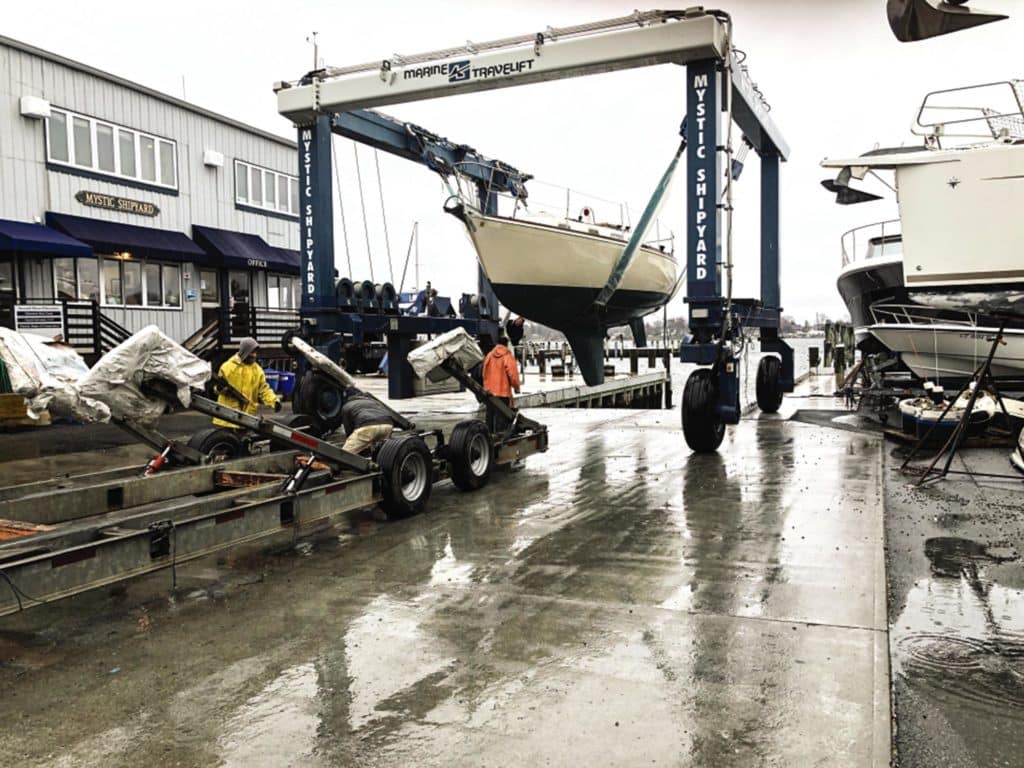
Tall, lanky, and with the sort of flowing locks old men dream about, Cal most certainly classifies as a young buck. But you need only to spend a few minutes talking to him to understand that he also bears an old soul, and maturity beyond his tender years. Moreover, he had the wisdom and guidance of a makeshift council of elders who helped turn his bold dreams into buoyant reality. And that actual dash across the mighty Atlantic? It was old-school, mates. What else would you call a trip undertaken on an S&S-designed Tartan 30 built in 1976 and purchased for the princely sum of $12,000?
Cal also had some serious familial support along the way. In fact, Cal’s voyage was, if nothing else, a total Currier family affair; after all, Cal’s father and grandfather were transatlantic veterans who knew more than a thing or two about what he was getting himself into. But wonderful and unexpected revelations also happened along the way—go ahead and call it kismet—beginning with a salty 90-year-old New England sailor who harbored his own open-ended ocean aspirations that Cal ultimately fulfilled, extending the tight Currier clan in the process.
But we’re getting ahead of things.
On July 6, I received a rather matter-of-fact, out-of-the-blue email from a fellow named James Currier informing me that his son was on the ninth day of a voyage that, if successful, might establish a new youngest-ever milestone for the sailing record-keepers. But this was the capper: “Cal got the idea to do this in January 2022 but didn’t really know how to sail. So he took sailing lessons at Spinnaker Sailing in Redwood City, fixed up an old boat in the spring, and left on June 27.”
Um, January? As in six months ago?
Yep.
James wondered if I might be interested in any of this. Oh, yes. I had several questions right off the bat. For starters, who the hell knowingly sends their teenage son alone into the North Atlantic during hurricane season, which officially had begun some six weeks earlier? (Of course, I immediately checked the GRIB files, and was relieved to see that nothing untoward was happening in the tropics.)
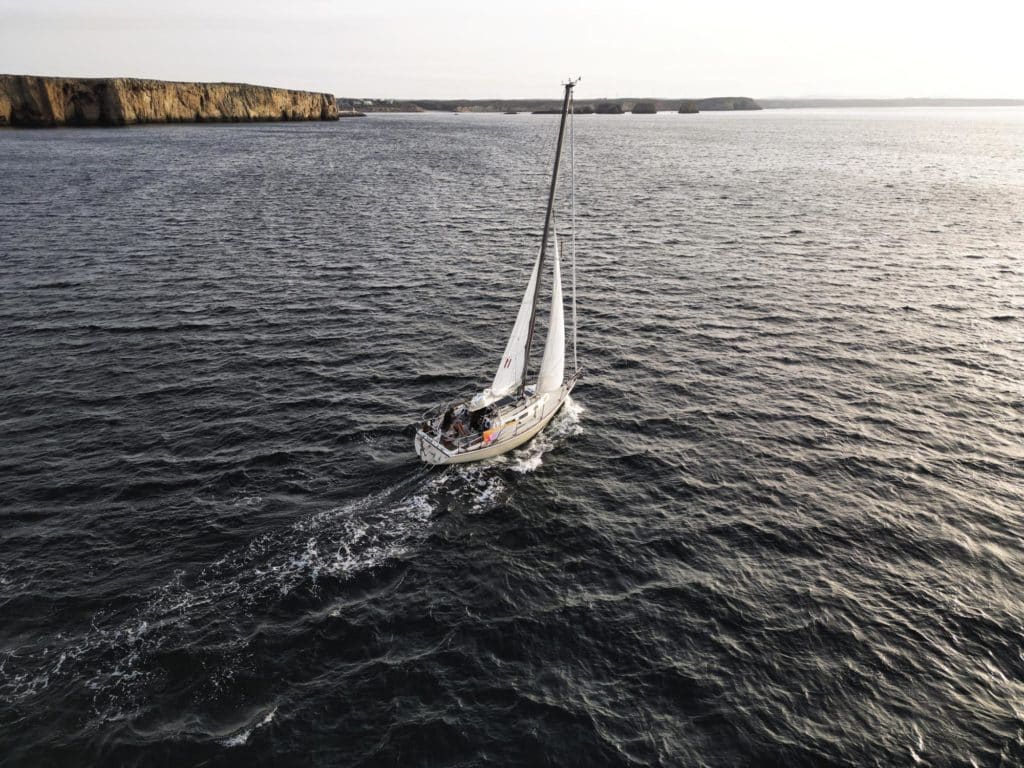
Still, I will frankly admit that I walked into this tale totally prepared for it to be a train wreck, and perhaps one of the weirdest sailing stories I’d ever encountered or reported.
Instead, it ended up being one of the coolest.
With a rather subdued send-off party of exactly five people in late June, Cal hoisted sail and pointed Argo directly into the maw of a solid 20-knot Buzzards Bay summer southwesterly, conditions for which the word “fun” has never applied. But nobody on the docks bidding him farewell was particularly concerned. They all expected him to turn around in a few days, if not hours. The option of simply bailing out had been part of the grand plan all along.
This I learned a few weeks later in the comfy living room of the Saltonstall residence on the main drag of Marion, Massachusetts, a couple of doors down from the prestigious Tabor Academy prep school. It’s where Cal’s mom, Trina, was raised; where his grandparents still reside; and just a few hundred yards from where Argo set forth. The Curriers had stopped to pay a visit on their way home to California, having stored Argo in a boatyard in Lagos at the conclusion of Cal’s memorable adventure.
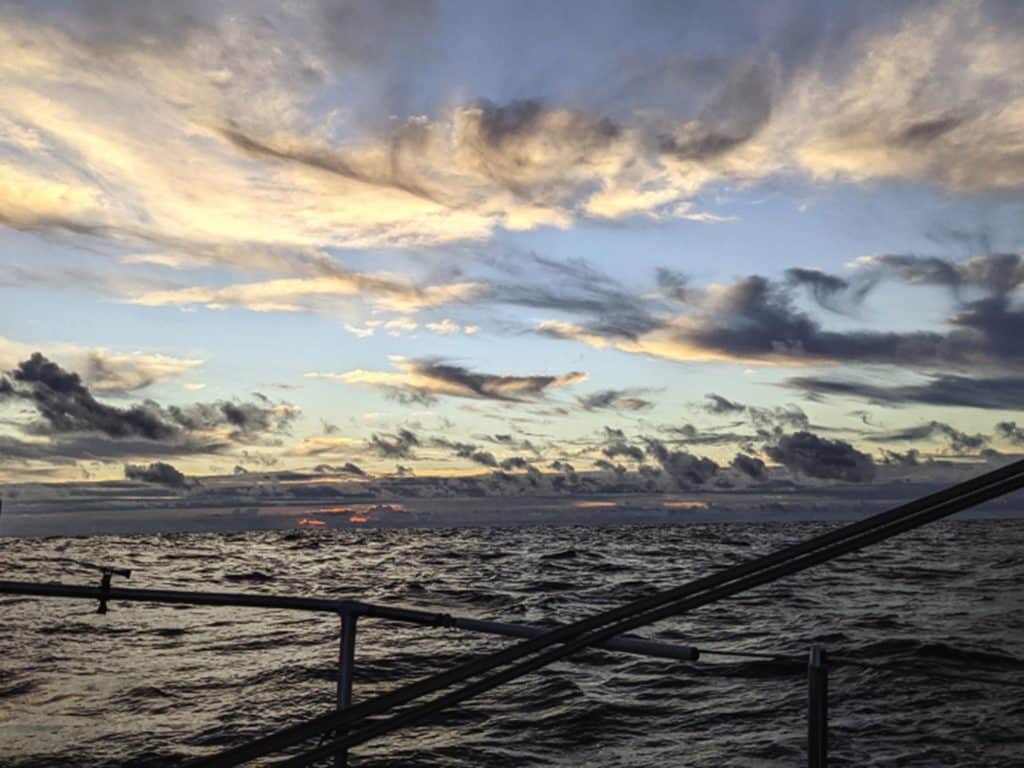
It was a fitting place to have a conversation, as Cal is surely a “Cali” dude, but this is a story with mighty New England connections. Like his wife, James Currier grew up around boats in the greater Boston area and is a graduate of Harvard Business School, the rather well-known institution where Trina earned an undergraduate degree. And granddad Bill Saltonstall is something of a Buzzards Bay legend, having taken names and kicked butt in local regattas for decades (his advice and encouragement through the entire endeavor was invaluable). Cal may not have grown up a sailor, but his parents sure did.
Not only that, but Cal found his unusual boat, a Tartan 30 that was unusually modified for offshore work, just down the figurative road in nearby Noank, Connecticut.
The whole thing had started innocently enough the previous Thanksgiving, when James, Cal and one of Cal’s three brothers were noodling ideas about challenging projects they might pursue the following summer. The Curriers are an outdoorsy bunch and not perturbed by discomfort, as proved by their winter camping trips in the snowy Sierras where they sleep in self-built igloos. So when Cal aired out the possibility of a trans-Atlantic mission, nobody was particularly incredulous.
“I thought it could be a really fun opportunity to live life to the fullest, to spread your wings,” Cal said. “And for some reason, I got hyperfixated on it.”
James saw the idea as a father-son project: “It ultimately didn’t matter to me whether he went or not. What mattered was the project, the goal.”
A serial entrepreneur, in the parlance of Silicon Valley, where he’s founded and/or served as the CEO of multiple companies, James attacked the problem as if launching a startup. He worked with Cal to produce a PowerPoint presentation of what they planned to achieve (and to silence any naysayers who might reasonably wonder if they were nuts). They also built a series of spreadsheets to address and answer a long list of straightforward, relevant questions (“Does Cal actually like sailing?” was chief among them). And they sorted out the knotty issue of acquiring the right vessel and fitting it out. Nothing was left to chance.
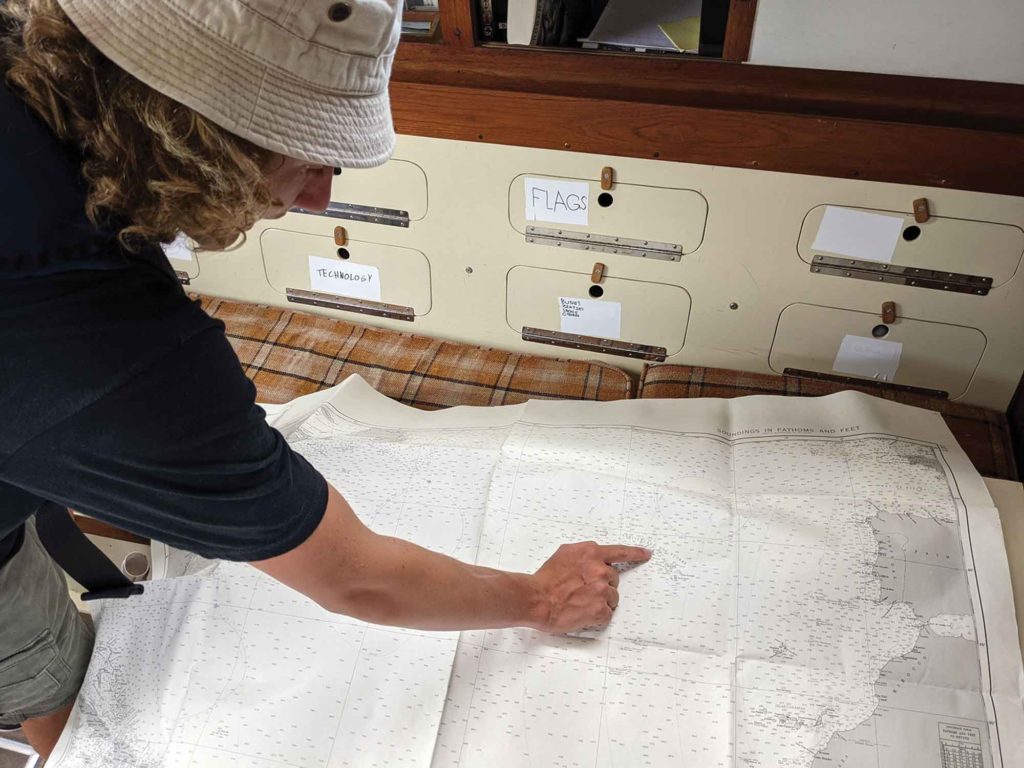
As it turned out, Cal quite enjoyed sailing—perhaps not the nuts and bolts of the pursuit, but as the means to the end he wished to accomplish. Along with the lessons, as a lad raised with the internet in these modern times, he also threw himself into YouTube videos, watching everything he could find about boat maintenance and repair, and ingesting the exploits of YouTubers such as solo sailor Sam Holmes for inspiration.
James saw the idea as a father-son project. It ultimately didn’t matter whether Cal went or not. what mattered was the project, the goal.
Now all Cal needed was a boat. The Curriers are a family of substantial means and could’ve easily procured any vessel they wanted. Which was precisely what they weren’t looking for.
“We wanted a boat between 27 and 33 feet, nothing larger than a 35-footer,” Cal said. “Something small, human-size, an older boat where everything is kind of proven and locked in place.”
Back to the World Wide Web they went, perusing the listings of nearly a hundred boats. They narrowed that number to 16 vessels and made phone inquiries to the respective owners, with their search eventually winding down to five full-keel boats they actually inspected: a Luders 33, an Alberg 37, a Tartan 34, a Westsail 32 and a Fuji 35. (Full-keel configurations with attached rudders were the favorable safety answer to the pointed spreadsheet question, “Why do boats sink?”)
And then, almost on a whim, they contacted a Noank nonagenarian called Sandy Van Zandt to inquire about the Tartan 30 he’d customized during much of the past decade for his own offshore plans, “the cheapest and weirdest of everything we looked at,” Cal said. Van Zandt’s initial response was curt: “You don’t want this boat.” Which, I was learning, is never the correct reply to the Curriers.
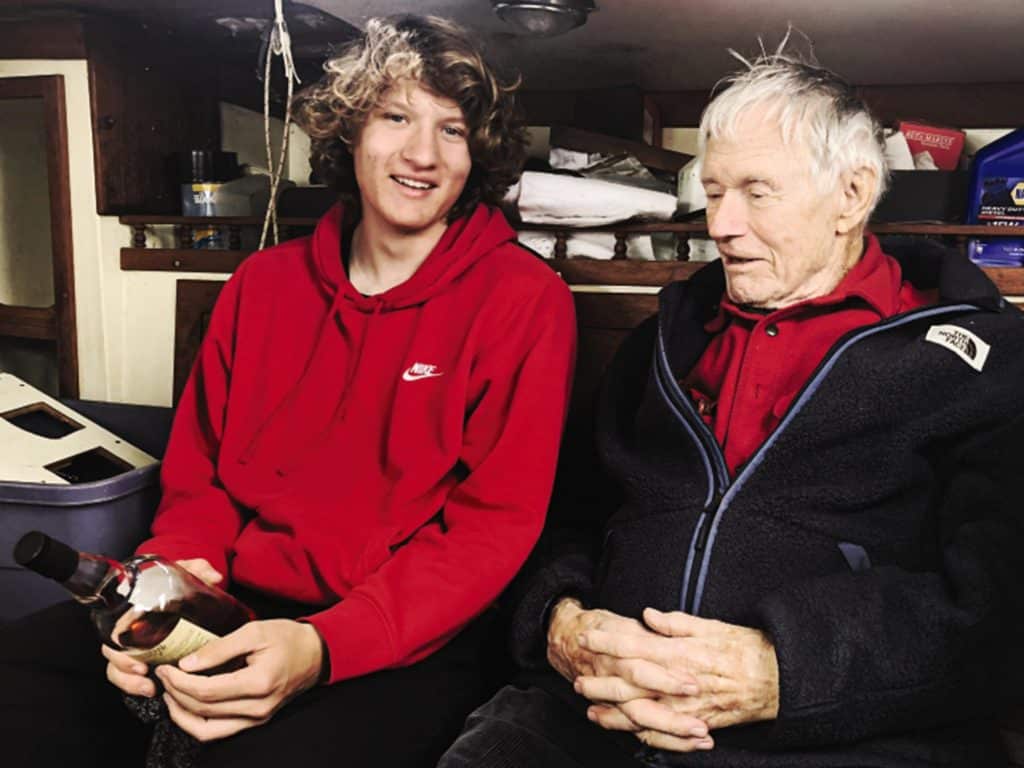
The skeg-mounted rudder, which they ultimately reinforced with the aid of Van Zandt’s neighbor Bruce Avery—another tribal member of the council of elders who ran the nearby Noank Marine Service, where the boat was kept—addressed the sinking worries. It wasn’t going anywhere. The taller spar Van Zandt had stepped—and the intermediate forestay he’d installed to add a staysail and change the rig from a sloop to a cutter—was another plus. Heck, a previous owner had even fixed a shoe to the fin keel, to deepen the draft and bolster the ballast. Finally, the boat had a nearly new set of fresh, beautiful sails from the Farrar Sails loft in nearby New London, and Van Zandt had even mounted a good servo-pendulum windvane to the transom. In other words, it was ideal.
The fact that Van Zandt, an accomplished racing sailor who also completed a 14-year circumnavigation in his earlier years, became a friend and mentor to the Currier cause was just icing on the cake. “We wouldn’t have been able to do it otherwise,” Cal said. The most poignant moment of the entire affair happened when Van Zandt, the sole figure on a lonely Noank pier, bid farewell to the Currier boys and his good old boat as they embarked on the delivery to Marion. His hopes and dreams, as it happened, were in good hands.
The duo’s five-day trip to Buzzards Bay, with a layover in Provincetown, provided Cal the opportunity to notch his first overnight sail. Argo (so named by Cal for the classic Greek myth of Jason and the Argonauts) got a good, hard shakedown in some staunch coastal wind and waves.
With all that and more checked off the spreadsheets, and a hundred days of food and water crammed aboard the 30-footer—along with another $7,000 worth of electronics and related gear, bringing the entire investment to a whopping $19,000—Cal went sailing. This time, he was all alone.
Once clear of the bouncy confines of Buzzards Bay on that inauspicious first day, into the open sea Cal went. On the advice of a shoreside router and weather expert Jennifer Francis, Cal set a great-circle course and got to it. All was well for the first three days, but on Day Four, with the windvane in command, he put his exhausted head down…and racked out for a solid eight hours, his quiet alarm too silent to wake him (he later hooked it up to his boombox, which solved the issue). On the route map of his journey, the one blip on basically the straight line to the Azores is a slight veer to the northeast, some 50 nautical miles, at this very juncture.
James said: “We were all sitting here and wondering what’s going on, everyone who’s following his trip on the Garmin inReach is texting me and asking, ‘What’s he doing?’ And I said, ‘He’s either asleep or turning around.’ Then he called us and we had our answer. He was fine and carrying on.”
Was he ever. Quite fortuitously, Cal latched onto the steady southwesterlies on the back side of a slow-moving, perfectly positioned high-pressure system and rode them for all they were worth.
With the exception of a rare gust to 30 knots, he never saw breeze above a steady 25 knots. Before setting out, James and Cal guessed that Cal might average about 90 nautical miles a day, for a roughly 36-day crossing. He was surpassing that figure, and by a lot: averaging about 120 miles a day. His biggest mistake? Not enough books; he powered through the 10 he’d brought (including Plato’s Republic, several other classics, and The Hobbit) and wished he had 30. He admits to shedding an occasional tear but mostly out of boredom or loneliness, never fear. He now says he’s likely done with solo sailing and learned that he treasures companionship more than he’d realized. (He’d actually originally asked his twin brother, Bodie, to accompany him, but Bodie declined. And James had asked if he could come as well. Cal unceremoniously nixed that request.)
It took 19 rather uneventful days, by Cal’s telling, to reach the Azores, but he had that old Tartan moving well and must’ve been doing quite a bit right. He’d originally planned to hang there a bit and immerse himself in the seagoing community, but frankly, he couldn’t find it, perhaps owing to the fact he was a sole teenager and not a gregarious salty dog. He briefly considered getting a pet, but that thought was quickly quashed.
His weather router advised hanging in the Azores for a while until stiff winds off the coast of Portugal abated, but he pulled up his own set of GRIB files and decided to go for it. He reckoned that the blow would be over before he got there, so he set back out after a 24-hour visit and powered north for several days—he had plenty of diesel fuel on board for just this eventuality—to break through the Azores High and have a favorable slant for a beam reach into European waters. The plan worked to perfection. The kid was learning a thing or two on his own.
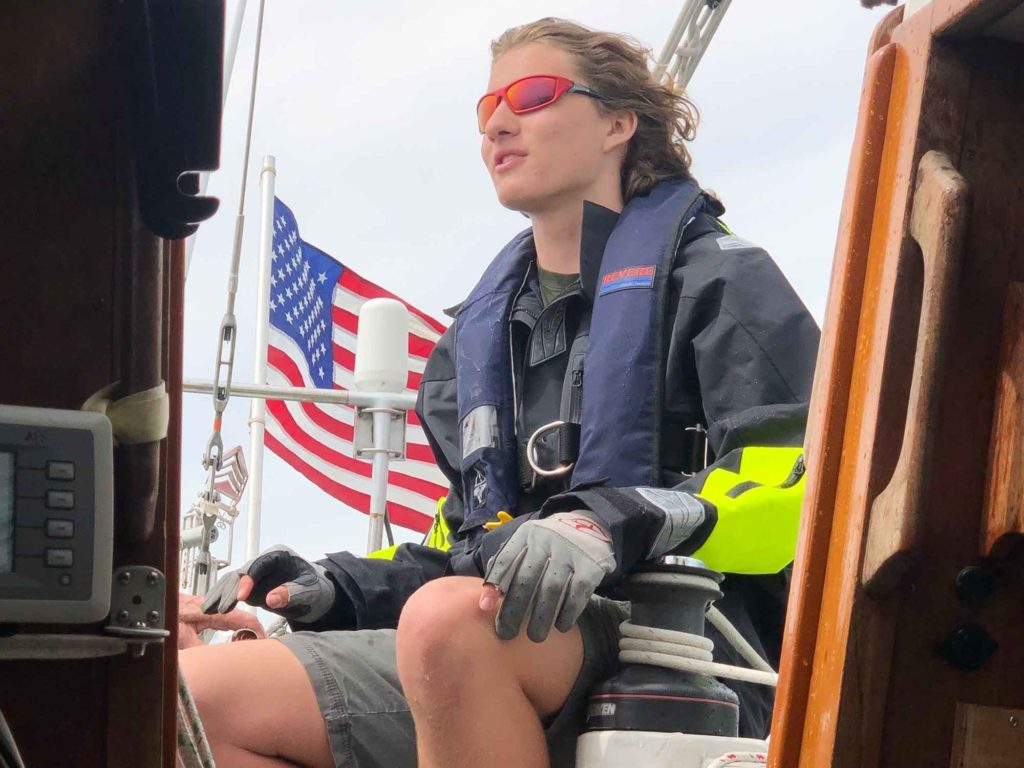
The hairiest part of the voyage was the end of it, the three days negotiating the shipping lanes into Europe in 15 to 20 knots of steady breeze and another 15 to 20 feet of nasty seas on the port beam. At one juncture, he tracked roughly 90 ominous targets dotting the screen of his AIS receiver. But he negotiated it all safely, and there in Lagos, Mom and Dad and Bodie were all waiting for him, his brother capturing it all with his drone.
He’d steered for six hours: “Jason,” the windvane, handled 90 percent of the helming duties, and his electronic Simrad autopilot the rest of it, when winds were too light for the vane past the Azores. He was 12 pounds lighter than when he’d departed.
His other numbers: a 5.25-knot average during 27 days of sailing, which is damn good for a vessel with a hull speed just over 6 knots. The only breakage? A frayed jib sheet, whose replacement cost a whopping $65 at a Lagos chandlery.
That was it. Otherwise, he could’ve bagged some groceries, turned around and shoved off.
He admits to shedding an occasional tear but mostly out of boredom or loneliness, never fear. He learned that he treasures companionship.
Back in the living room, we were starting to look back on what precisely had transpired. As the saying goes, there was a lot to unpack. I had to start with the question about hurricane season.
“You’re the first to ask about that,” said James, who added that they’d done some intensive research on storm tracks and timing, and concluded that as long as Cal was in the Azores by early August, he’d be within a safe weather window. Point taken: That call had worked out fine. But it also put a hard number on the departure date of June 27, and everything worked backward from then.
“We had this deadline, and it was not movable because of that window,” James said. “And we got so much done in those six months; we became such a team; it was such an exhilarating time. And what we found is that you can get so much accomplished if you have a fixed deadline.”
James’ current professional position is the founder of a company called NFX, which stands for network effects, basically a Silicon Valley outfit that advises and serves other fledgling Silicon Valley outfits. Which led to another instance when a business solution was applied to Cal’s journey.
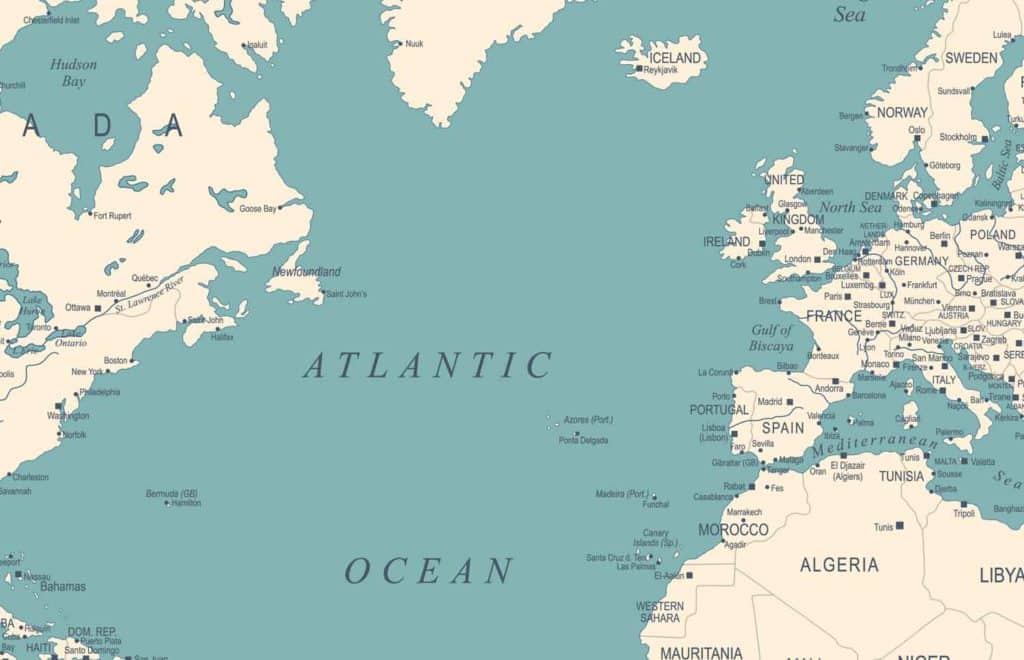
“At NFX, we started an accelerator program where we put entrepreneurship on a calendar, which had not really been thought of or done before,” he said. “And what we found is that people could get a year’s worth of work done in three months because they needed to make presentations to investors to raise money in 90 days. And we basically did the same thing to ourselves over a six-month period. Tick, tick, tick. Let’s do it.”
There are some lessons there for every hopeful cruising sailor looking to put a boat together for extended voyaging.
Which brings us back to Argo, and how the Curriers put that together. James reiterated something he’d said in an earlier email to me: “We see things differently from others: 1) Most people think a bigger boat is safer. We disagree for solo sailing. A smaller boat won’t have a jib sheet rip off your hand, can handle rough seas, and has lower forces on it. 2) Most people think having the most sophisticated equipment is best. We disagree. Having every system be independent, particularly electronics, makes it easier to diagnose and fix what isn’t working. Simpler is better. 3) Most people think having a newer boat is safer. We disagree. Older boats are proven. They typically have thicker hulls, sturdier fittings. Newer boats have things breaking more frequently.”
Argo also had plenty of redundancy, including two satphones, a pair of VHF radios, three GPS sources (electronic chart plotter, iPad, Android phone), two 100-watt solar panels (and a foldable 28-watt backup for charging phones if all else failed), four batteries in two pods that could be disconnected from one another and operated independently, and on and on.
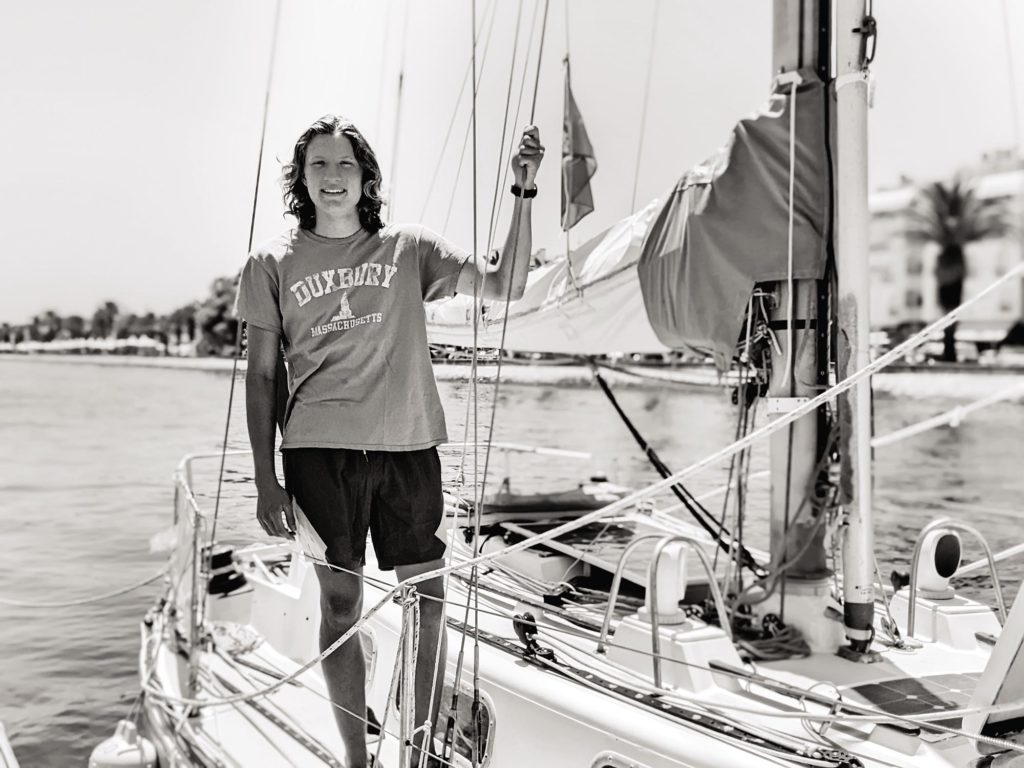
And, oh yes, Cal financed the trip by starting a physics summer camp with his brothers, and scoring some in-kind sponsorship from several marine vendors for necessary gear. “And the boat will sell for more than he purchased it,” James said. “In that regard, Cal paid his own way.”
As for the youngest-ever record, Cal was certainly aware of the exploits of youthful sailing pioneers such as Robin Lee Graham and Laura Dekker. And it’s likely he set a mark as the youngest sailor to record a west-to-east trans-Atlantic voyage. But it’s impossible to verify. The gatekeepers for sailing records—the World Sailing Speed Record Council—no longer ratifies youngest or oldest claims or attempts, and its rules do not include such categories. Smart, really, because there’s no use encouraging dangerous behavior.
In any case, for Cal, that was utterly beside the point.
“The trip was not much fun, but everything leading up to it really was,” Cal said. “It was an amazing bonding experience with my dad. We had a lot of fun learning all this stuff together. And it was really interesting to try to get good at this skill very quickly, and meeting all the people who just were willing to help. I did it out of a love of adventure and found so much meaning in this project. I used it as a way to love life and love the outdoors. And I’d just say to other kids: Do more fun things. Not without parental supervision, but do awesome stuff. This is a perfect age because you’re capable.”
James acknowledged that Cal was pushing boundaries: “You’re a teenager. You’re supposed to push boundaries. Not drinking or driving or using drugs—something else. Time in the wild is precious. I think as a society, we’ve sort of lost that idea. Everyone should take the time to have a walkabout.”
“Fighting the wolf,” Cal said.
“Right,” Dad said. “Fighting the wolf.”
As we neared the conclusion of our talk, it was pretty clear that Cal had enjoyed our conversation, and it was interesting and all, but the adventure was already basically in the rearview mirror. After all, tryouts for the Palo Alto High School volleyball squad were right around the corner. Like every teenager in the history of teenagers, he was moving forward. Life, right? He’s just getting started.
The moral of all this? Not from the mouths of babes but from the actions of a teenager: Grab life. Get uncomfortable (you’ll feel better later, I promise). Nurture your dreams. Consider all the options. Make a list. Check off stuff. Make another list. Out with the new and in with the old, or whatever else works. Then go for it. You just might surprise yourself.
Or you might wind up like Cal Currier—and not be surprised at all.
Herb McCormick is a CW editor-at-large.

